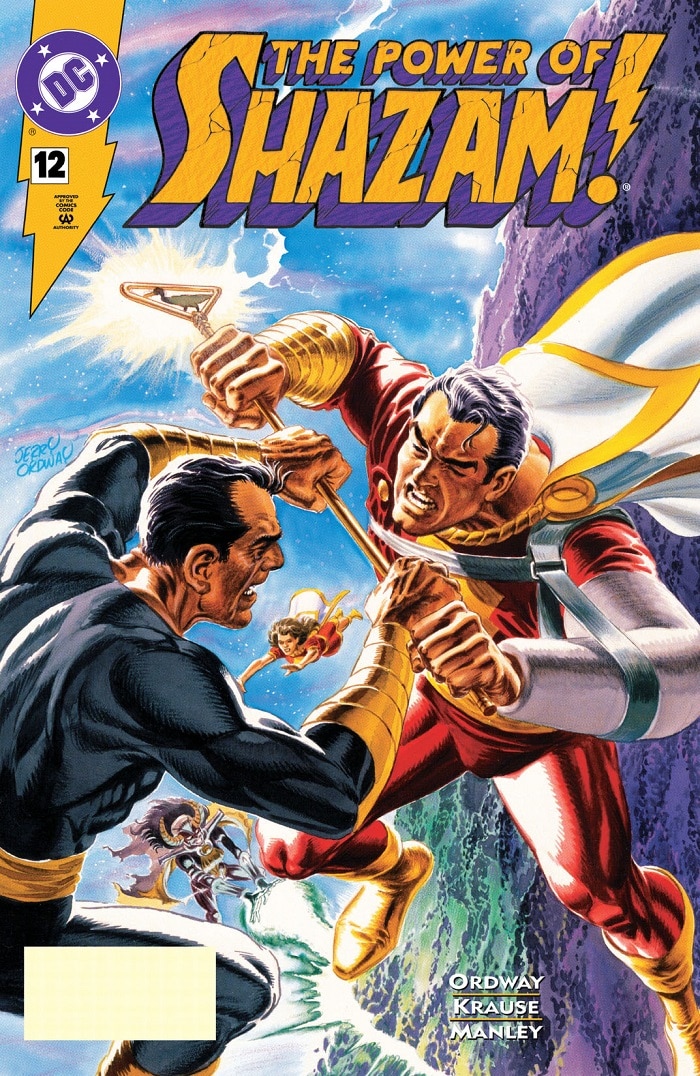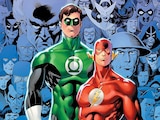In 2016, writer Christopher Priest took us on an uncompromising fifty-issue journey through the life and times of one of the DC Universe’s most notorious villains—Deathstroke the Terminator. Unlike previous Deathstroke comics, Priest’s goal was to present the mercenary Slade Wilson as the vile and reprehensible soul he was with no sugar coating. Deathstroke was not an anti-hero under Priest’s pen, he was a monster. Even when Slade didn’t want to believe that himself.
Six years later, Priest makes his DC return this week with a new leading man: Black Adam, the original, fallen champion of Shazam. With a Black Adam movie looming in the near future, the time is right for Billy Batson’s most notorious enemy to get his own ongoing series. But if your image of Black Adam is just a darker, more serious Billy, then you’re underselling just how far he’s fallen. After all Black Adam has done, the so-called protector of Kahndaq may be beyond redemption. Is Black Adam capable of becoming the champion of humanity that the Wizard once saw within him? Or is he, like Deathstroke, always destined to succumb to his worse nature? Perhaps we’ll find an answer within the fall, and rise, and fall, and rise, and fall again of Earth’s Mightiest Menace.
Foul from the Faucet

Public perception of the Shazam mythology today is that Black Adam has always been Billy Batson’s opposite. But from Billy’s first appearance until DC acquired the rights to Shazam from Fawcett Comics in the 1970s, Black Adam only made one appearance—as a foe worthy of bringing the entire invincible Marvel Family together to defeat.
In 1945’s Marvel Family #1, the Wizard Shazam tells Captain Marvel, Mary Marvel and Captain Marvel Jr. the story of his first champion. The mage had first chosen an Egyptian man named Teth-Adam to wield the power of the gods against the enemies of man, but he quickly succumbed to his power in the name of global conquest. Shazam sealed Black Adam away for 5,000 years, naming him “Black Adam” for his grave mistake in judgment. When Black Adam returns, it’s Billy’s Uncle Dudley who kills the invincible foe by tricking him into saying “Shazam,” instantly aging him five millennia upon reverting to his mortal form.
That was the last anyone saw of Black Adam for over thirty years. In DC’s Shazam #28, mad scientist Dr. Sivana uses his resurrection machine to restore Black Adam to life and exact vengeance on Shazam and the Marvel Family. As in his first appearance, this incarnation of Black Adam showed no signs of heroism, fully committing to bringing down those who have bested him in the past. This original Black Adam was thoroughly evil to the last, battling against Earth’s heroes all the way up through Crisis on Infinite Earths.
Clearly, for Black Adam as he was envisioned by creators Otto Binder and C.C. Beck, there was never a thought of redemption at all.
Fallen Hero

The Shazam mythology experienced a couple of false starts after the cosmic reshuffle of the Crisis, but ultimately found purchase within 1994’s Power of Shazam! series by Jerry Ordway. This comic presents us with two Black Adams. Here we learn that the original Teth-Adam actually served in his duties well for centuries until he was seduced into his designs on global conquest by the demon Lady Blaze. The Wizard strips Teth-Adam of his power, killing him with the onset of age, and contains that power in a mystic scarab.
The second Black Adam, an unscrupulous archaeologist named Theo Adam, was entirely villainous from the start. Theo, as Billy eventually learns, was responsible for the murder of his own parents who were killed as he scrambled to obtain the power of Black Adam’s scarab. Billy and his allies battle this reincarnated Black Adam throughout the series, but when Shazam erases Theo’s memory in order to prevent him from accessing the power again, the personality of the original Teth-Adam emerges in the subsumed Theo’s place. Perhaps this new Black Adam, whose fall was brought on by demonic influence, could one day return to his heroic roots.
Ruler of Kahndaq

Black Adam as we know him today, however, bears very little resemblance to the Black Adam of Binder and Beck, or even Ordway’s demon-smitten pharaoh. In Geoff Johns’ new revision of Black Adam’s history with David S. Goyer, as seen in their JSA series, Adam was driven to villainy after a career in heroism by an Injustice-like corruption of his morals brought on by great tragedy.
This time, it was Metamorpho predecessor Akh-ton who brought about Teth-Adam’s change of heart by using his power to conquer Kahndaq and murder Adam’s wife and children. Teth-Adam’s fall occurs when he murders Akh-ton in kind and resolves never to show weakness again—enforcing peace on Earth by his own brutal and uncompromising terms.
In the mind of this Black Adam, the one we best know now, he never fell at all. The severe justice without mercy he enforces upon his people is what he believes is necessary for them to prosper in peace. Now reincarnated, and after a brief stint with the Justice Society of America, this Black Adam returns to his people to rule them as he once did in millennia past (changed ever so slightly in the name of good taste from Egypt to the fictional Middle Eastern nation of Kahndaq). Among his people, Black Adam was so powerful that no one could really do much to stop him—nor was it clear whether stopping him was even the right thing to do.

In a reversal of Ordway’s history, this Black Adam was influenced by a lover to lean towards mercy and charity for his people: Adrianna Tomaz, an Egyptian freedom fighter with whom Black Adam shares his power. But when Adrianna is killed in an act of treachery, Black Adam fully succumbs to his darkest self and wages a one-man war on the world—pitting the entire population of Earth’s heroes against his wrath. He almost wins.
Black Adam spends the next several years after World War III attempting only to restore his lost love, her resurrection all that really matters to him. It seems, then, that the key to manipulating Black Adam towards good or evil is within his heart.
The Original Sin

After the start of the New 52 in 2011, Black Adam returns to antagonize Billy Batson again in a new Shazam story that unspooled in the back pages of Justice League. Once again written by Johns, this version of Black Adam is far more sinister. Although he did rise to conquer the Enemies of Man before his own downfall, Johns shares that the way Adam came about his powers had damned him from the very start. As slaves, Adam’s nephew Aman was the one chosen by the Wizard as his original champion. But determining that Aman lacked the conviction to do what was necessary to save humanity, Adam sacrificed his nephew to gain the power of Shazam for himself. Could any good Black Adam do with the power he stole justify this blood on his hands?
That’s a question Superman doesn’t even know to ask, as evidenced when he invited Black Adam to join the Justice League in Infinite Frontier #0. Surrounded by good influences through Brian Michael Bendis’s run on the group title, he even seemed to be doing okay as a hero. But as the sole survivor of the League’s destruction by the Dark Army in Justice League #75, all the role models oblivious to his dark origins are no longer around to guide his moral compass. And while the world has forgotten Black Adam’s original sin, Priest has not forgotten. In Black Adam, a reckoning for Shazam’s first champion is on its way.
“The world needed a hero,” the posters for the upcoming Black Adam film declare. “It got Black Adam.” These things are not the same.
Black Adam #1 by Christopher Priest and Rafa Sandoval is now available in print and as a digital comic book.















